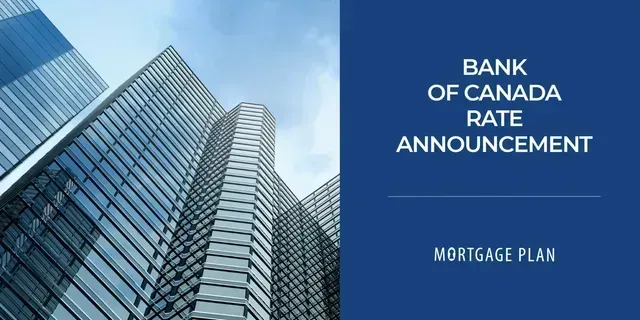Canadian Home Sales Fell For Fourth Consecutive Month in August
This morning, The Canadian Real Estate Board (CREA) released their national real estate statistics for August, which showed a further slide in home sales as new listings resumed their decline and home prices increased once again. For Canada as a whole, the number of homes trading on the MLS Systems fell 3.1% month-over-month in August–the largest monthly decline since December 2014. Combined with the plunge in home sales in the prior three months, the August slide places national home sales activity 6.9% below the record set in April of this year.
Sales activity fell in almost 60% of all markets in August, led by the steep decline in Greater Vancouver following the August 2nd introduction of the new property transfer tax on homes purchased by foreign buyers. According to the CREA, activity also declined in the Fraser Valley and August marked the sixth consecutive monthly decline in the Lower Mainland.
“The sudden introduction of the new property transfer tax on homes purchased by foreign buyers in Metro Vancouver has created a cloud of uncertainty among home buyers and sellers,” said CREA President Cliff Iverson. “That the tax applies to sales that had not yet closed shows how the details for a new tax policy can unnecessarily destabilize housing markets.”
“Single family homes sales were already cooling before the new land transfer tax on foreign home buyers in Metro Vancouver came into effect,” said Gregory Klump, CREA’s Chief Economist. “The surprise announcement of the new tax caused sales to brake hard.”
In direct contrast, activity in Greater Toronto continued strong, further evidence that the new tax on purchases by foreigners in Vancouver did have a meaningful impact. On a not seasonally-adjusted basis, actual sales activity for the country as a whole was up 10.2% y-o-y in August. Sales were up from year-ago levels in about three-quarters of all Canadian markets, led by Greater Toronto. Greater Vancouver posted the largest y-o-y sales decline.
Listings Fall Again
The number of new listings resumed their decline in August, falling 2.7% from July–down in four-out-of-five of the previous months. Declines in new listings in the Lower Mainland, Greater Toronto and Montreal more than offset gains in less active markets.
Many potential home sellers have been reluctant to put their properties on the market. With the continued rise in prices, sellers have been waiting to garner additional gains in value. In addition, many have been priced out of alternative housing options. Clearly, a sustained softening in home prices in Vancouver, Toronto and Montreal could trigger a deluge of new listings, which would further soften prices. This would be a dramatic and long-awaited reversal of the pattern we have been experiencing for many months now.
Sales-to-New-Listings Ratio
With sales and new listings both down by similar magnitudes in August, the national sales-to-new listings ratio was little changed at 61.6%–down from the high of 65.3% posted in May. A ratio in the range of 40%-to-60% is considered generally consistent with balanced housing market conditions. Above 60% is considered a sellers’ market and below 40%, a buyers’ market.
The sales-to-new-listings ratio was above 60% in almost half of all local housing markets in August–virtually all of which continued to be in British Columbia, in and around the Greater Toronto Area and across Southwestern Ontario. Quite importantly, the ratio moved down to the mid-50% range in Greater Vancouver in August, reflecting the outsized plunge in sales, after having begun the year at a whopping 90%.
Number of Months of Inventory
The number of months of inventory is another important measure of the balance between housing supply and demand. It represents the number of months it would take to completely liquidate current inventories at the current rate of sales activity.
There were 4.8 months of inventory on a national basis at the end of August 2016. This was up from 4.6 months in the previous three months and marked the first increase in almost a year.
The number of months of inventory had been trending lower since early 2015, reflecting increasingly tighter housing markets in Ontario – and, until recently, in B.C. It nonetheless remains below two months in Victoria and virtually everywhere within the Greater Golden Horseshoe region, including Greater Toronto, Hamilton-Burlington, Oakville-Milton, Guelph, Kitchener-Waterloo, Cambridge, Brantford, the Niagara Region, Barrie and Woodstock-Ingersoll. Indeed, major areas within the GTA have less than one month of inventory.
Prices Continue to Rise
The Aggregate Composite MLS House Price Index (HPI) rose 14.7% y-o-y last month, the largest gain in nearly ten years. This price index, unlike those provided by local real estate boards and other data sources, provides the best gauge of price trends because it corrects for changes in the mix of sales activity (between types and sizes of housing) from one month to the next.
For the seventh consecutive month, y-o-y price growth accelerated for all types of property. Two-storey single family home prices continued to rise the most (16.3%), followed by one-storey single family homes (14.4%), while apartment unit prices rose 11.7% y-o-y.
Greater Vancouver (+31.4 percent) and the Fraser Valley (+38.3 percent) posted the largest y-o-y gains by a wide margin. Smaller double-digit y-o-y percentage price gains were also recorded by Greater Toronto (+17.2 percent), Victoria (+18.9 percent) and Vancouver Island (+13.1 percent).
By contrast, prices were down -4.1 percent y-o-y in Calgary in August. Although prices there have held steady since May 2016, they have remained down from year-ago levels since September 2015 and are 4.7 percent below the peak reached in January 2015.
Additionally, prices were down by -0.9 percent y-o-y in Saskatoon in August. While prices have remained below year-ago levels since August 2015, they are on track to begin rebounding before year-end should current trends persist.
Meanwhile, home prices posted additional y-o-y gains in Greater Moncton (+6.6 percent), Regina (+3.7 percent), Greater Montreal (+2.5 percent) and Ottawa (+1.7 percent).
This article was written by Dr. Sherry Cooper, Chief Economist with Dominion Lending Centres. It was originally published here.
Share
RECENT POSTS








